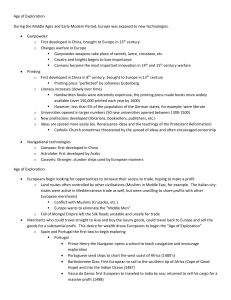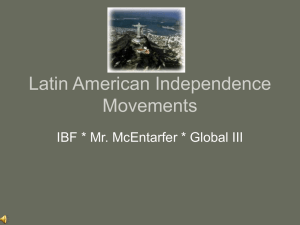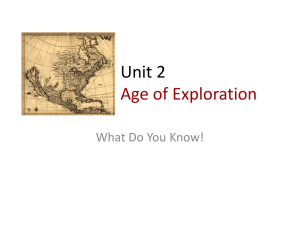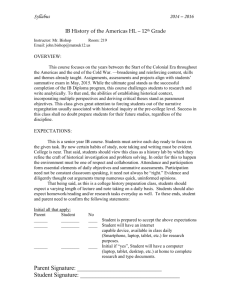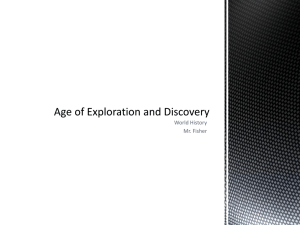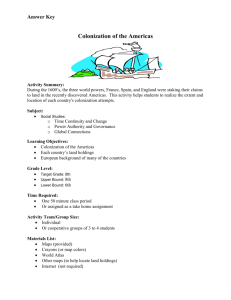LATIN AMERICA: Short- and Long
advertisement
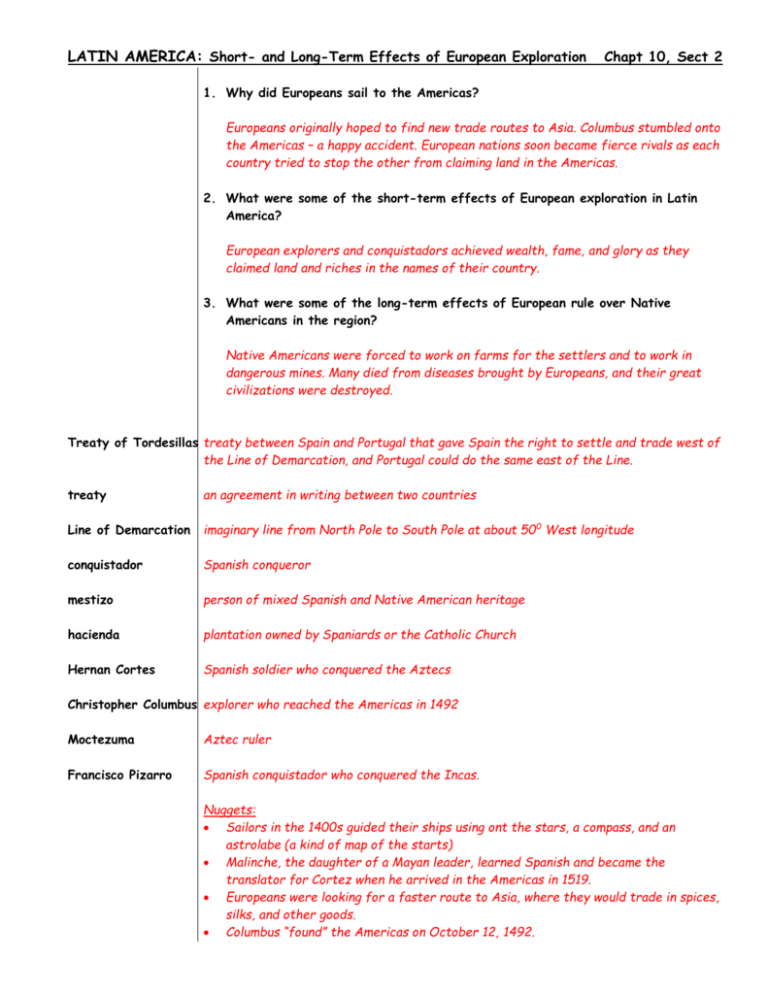
LATIN AMERICA: Short- and Long-Term Effects of European Exploration Chapt 10, Sect 2 1. Why did Europeans sail to the Americas? Europeans originally hoped to find new trade routes to Asia. Columbus stumbled onto the Americas – a happy accident. European nations soon became fierce rivals as each country tried to stop the other from claiming land in the Americas. 2. What were some of the short-term effects of European exploration in Latin America? European explorers and conquistadors achieved wealth, fame, and glory as they claimed land and riches in the names of their country. 3. What were some of the long-term effects of European rule over Native Americans in the region? Native Americans were forced to work on farms for the settlers and to work in dangerous mines. Many died from diseases brought by Europeans, and their great civilizations were destroyed. Treaty of Tordesillas treaty between Spain and Portugal that gave Spain the right to settle and trade west of the Line of Demarcation, and Portugal could do the same east of the Line. treaty an agreement in writing between two countries Line of Demarcation imaginary line from North Pole to South Pole at about 50 0 West longitude conquistador Spanish conqueror mestizo person of mixed Spanish and Native American heritage hacienda plantation owned by Spaniards or the Catholic Church Hernan Cortes Spanish soldier who conquered the Aztecs Christopher Columbus explorer who reached the Americas in 1492 Moctezuma Aztec ruler Francisco Pizarro Spanish conquistador who conquered the Incas. Nuggets: Sailors in the 1400s guided their ships using ont the stars, a compass, and an astrolabe (a kind of map of the starts) Malinche, the daughter of a Mayan leader, learned Spanish and became the translator for Cortez when he arrived in the Americas in 1519. Europeans were looking for a faster route to Asia, where they would trade in spices, silks, and other goods. Columbus “found” the Americas on October 12, 1492. LATIN AMERICA: Short- and Long-Term Effects of European Exploration Columbus voyages to the Americas Hernan Cortez conquers the Aztecs. Chapt 10, Sect 2 Francisco Pizarro conquers the Incas. Spain colonizes Latin America Spain divides its territory into provinces and setsup strong governments Only Spaniards and Catholic Church can own land in Americas. By 1540, Spain claims most of the land in the Americas. Nuggets (continued): The Treaty of Tordesillas, a written agreement between Spain and Portugal, set a Line of Demarcation at 50 0W. This was set BEFORE they explored the land and they hoped to avoid future wars over rights to lands with this treaty. As it turned out, only half of Brazil was in the area reserved for Portugal; all other land was in the area reserved for Spain. This is why today Brazil is the only Portuguese speaking country in Latin America! Spanish rulers did not pay for the trips made by the explorers; instead they gave conquistadors the right to keep 80% of what they found, as long as the King of Spain got the land and 20% of the riches found. Initially Moctezuma invited Cortez into Mexico City, thinking he might be some sort of god. Cortez brought just 500 men and 16 horses, yet they were able to conquer a much larger number of Aztec warriors. Francisco Pizarro, also a Spanish conquistador, sailed around the southern end of South America and sailed to the Incan empire. With only 180 soldiers, he was able to conquer the capitol city, and within four years he controlled the entire Inca empire. Within fifteen years (1519-1534), the conquistadors defeated the two more powerful empires in the Americas. They had guns, horses, cannons; they also carried diseases against which the Native Americans had no immunity. By the 1540s, Spain controlled much of the Americas. Spain divided its territories into provinces and set up a strong government. New Spain (Mexico City) and Lima (Peru) were the two most powerful provinces. Spaniards lived in the centers of the cities; mestizos (mixed heritage) lived on the outskirts of the city; and Native Americans lived in the countryside. Many Native Americans died from overwork, malnutrition, and disease. In 50 years New Spain went from a population of 25 million to just 3 million people. ___________________________________________________________________________________ SUMMARY: As Europeans explorers expanded their wealth and claimed land in Latin America for their countries, their exploration and conquests damaged many Native American civilizations.

